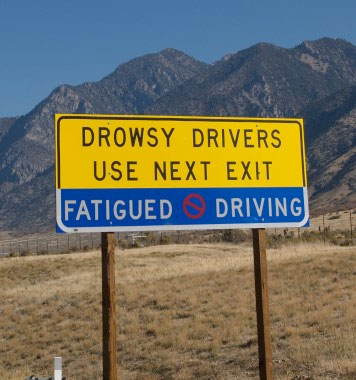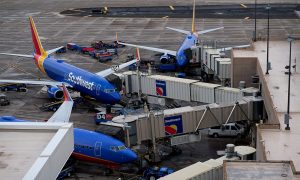It’s always surprising how little the trucking industry is covered by the financial press, considering just about all of the material goods used by consumers and businesses has been on a truck at one time or another; the supply chain is an integral part of any business.

Usually we only hear about trucking following tragic accidents like the recent one that killed one person and landed actor and comedian Tracy Morgan in intensive care. Then, for a time, the media jumps on board with coverage like “Truck driver in Tracy Morgan crash hadn’t slept in 24 hours,” and “Tracy Morgan crash fuels debate over tired truckers.”
In turn the industry goes on the defensive and a bit of public discourse takes place, then quickly dies down until the next fatal accident. But I’ve never really seen a good follow-up piece of journalism that clearly explains the business model for trucking companies, the business model for truck drivers (who either can be employees of freight businesses or independent owner-operators) and why on earth the pay structure is one that relies on covering the most miles in the shortest period of time.
There seems to be a constant tension between regulators and the industry with nitpicking over the minutia of rule-making and enforcement instead of the most straightforward approach: Encourage change in the industry pay structure so that making more money is not dependent on dodging rules and driving 600 to 700 miles a day. I don’t pretend to understand all of the metrics of the industry but it would be interesting to get some clear, lay-friendly answers from trucking executives as to why the pay-per-mile paradigm still rules.
NBC News delved a little deeper with “Why are long-haul truckers so tired?” It explored some of the labrynthian and complex rules that govern what are known as “hours of service” rules – the laws set by the U.S. Department of Transportation that attempt to keep sleepy drivers off the road. Here’s the relevant link to the Federal Motor Carrier Safety Administration that explains the rules; note last year’s press release about updated regulations aiming to reduce driver fatigue. If you read the summary of the rule, you’ll see that it’s rather complex and compliance — which literally requires sleep during certain hours of the day – must be difficult.
“What about businesses that have
a lot of freight to be hauled,
from manufacturers to retailers to food distributors –
do they put any safety requirements
on their shippers? “
Again, talk to law enforcement, owner-operators, truck-drivers-for-hire and other interested parties about compliance issues and what they suggest might help alleviate fatigue and distraction. Some carriers use electronic means to record driver hours; others keep a paper logbook that must be produced on demand to officials. Federal regulators earlier this year said they want to mandate the electronic logbooks, which are harder to falsify. (A side note, defending drivers who have committed logbook violations or falsifications is a legal niche you might want to explore; what do attorneys say about why their clients cheat? Just Google ‘attorney logbook violation’ and a geographic term to find lawyers near you.)
Historically, before GPS could pinpoint a rig’s location at any time, or before black boxes were available to track driver behavior, and just pre-instant communication in general, one can envision that paying drivers an hourly wage might cause unscrupulous people to mosey slowly in or der to inflate their pay. Now, though, with weather, traffic and location information readily available to employers and dispatchers, why not adapt? It makes sense to reward efficiency but paying drivers by the mile seems a surefire way to encourage pouring on the power at the expense of safety.
Some companies do put speed governors on vehicles so that drivers can’t exceed, say, 64 mph. That puts a finite limit on the number of hours possible during a legal shift behind the wheel, so why, I wonder, wouldn’t a fixed salary be suitable for a driver in a rig thus equipped? If a driver is slowed by traffic, by inefficient loading at a customer site or other factors beyond his or her control, the company would absorb the cost rather than the driver. Again, there may be perfectly logical or valid reasons for the current pay paradigms but with so much focus on drivers pressing the limit of speed and wakefulness, let’s ask freight companies to explain.
Payscale.com says the median truck driver wage is $16 an hour; note the ranges and also note the list of major employers and the regional variations if you’re planning to localize. And here’s a directory of truck stops nationwide if you want to head out and talk directly to people on the road today. If you use satellite radio, I find the Road Dog Trucking channel to be informative, particularly its morning drive time and mid-afternoon shows.
Trade groups include the Owner Operator Independent Drivers Association and America’s Independent Truckers Association as well as the American Trucking Associations (plural is correct on ‘associations’) which has issued a statement on the recent crash and also has a just-out trucking trends report.
The American Society of Transportation and Logistics might offer some area members as interesting sources of commentary as well.
Even if you don’t have any local trucking companies, what about businesses that have a lot of freight to be hauled, from manufacturers to retailers to food distributors – do they put any safety requirements on their shippers? Are they willing to pay more for companies that reward safe-driving practices?










